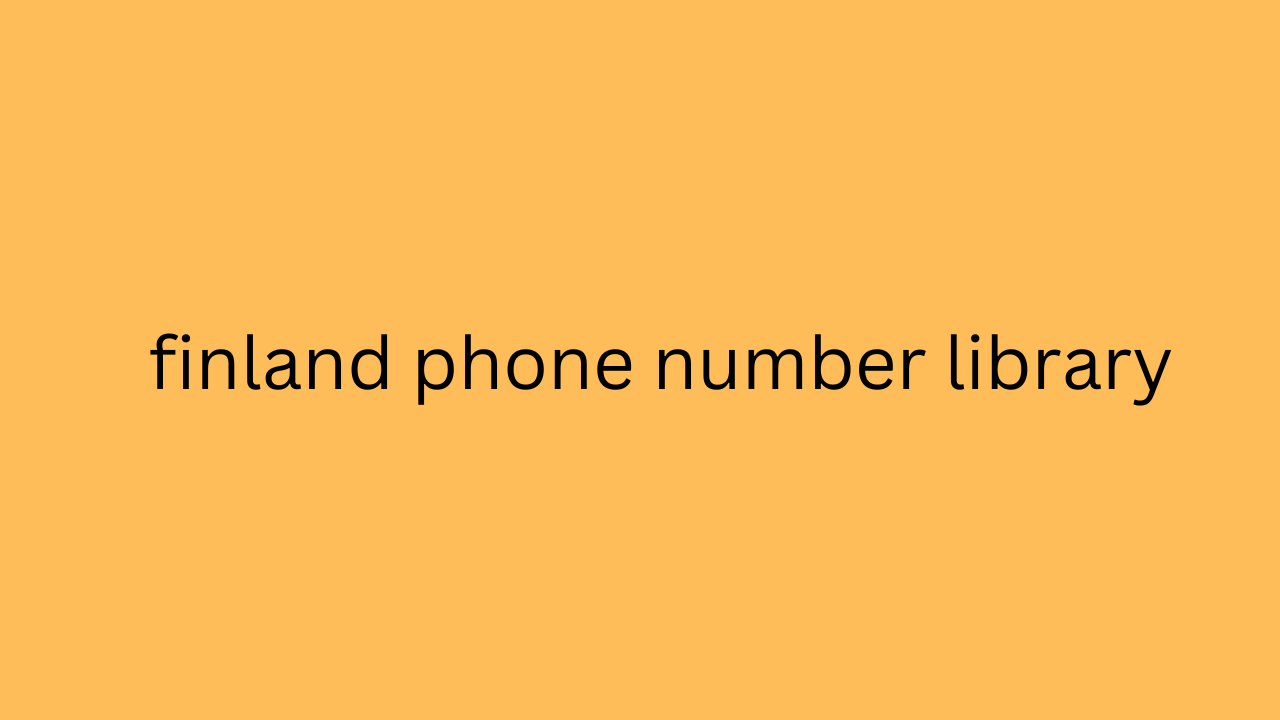The Difficulties of Using Google Ads for B2B Lead Generation
Google Ads has dominated the online marketing landscape for years thanks to its ability to reach large audiences and intercept audience searches, guiding them towards sponsored content.
However, when it comes to targeting in B2B, the situation changes dramatically: the finland phone number library journey of the professional looking for B2B solutions or products is complex and often not linearly traceable through traditional Google Ads channels (except for search campaigns, which we will discuss later).

Display campaigns for B2B lead generation:
In fact, following the cookie-geddon, which started the fight against third-party cookies, Google Ads offers a segmentation of the audience “in its own way”, based on the interactions of users with Google products, some third-party sites and their “possible” interests based on navigation and history. The segmentation factors can be various, such as affinity, demographic data, important events in one's life, etc.
But as is evident, these are variables that are more suitable for the B2C world than for the B2B. It is true that it is also possible to identify users who work for companies in specific sectors, with specific dimensions, in specific geographical areas, but the criteria for defining the variables are not very clear and always depend on the interaction of users with Google tools.
Search campaigns for B2B lead generation:
Among the campaigns made available by Google, search campaigns are the ones that are most suitable for B2B companies and their lead generation processes. However, the problems that have emerged in recent years with search campaigns and that penalize the tool as a means of acquiring traffic are mainly:
Cost per Click (CPC) increased by an average of 10%, for some industries by as much as 25% year over year. In general, each industry saw different fluctuations in CPC, but it increased for 86% of the industries that do advertising and search campaigns.
The conversion rate has steadily decreased, reaching 1% for some advertisers (this concerns 12 out of 23 sectors, in particular companies in the financial & insurance and dental sectors were affected). The decline is certainly attributable to the saturation of the sector , a decrease in demand , increasing digitalization of marketing but also to the change by Google of its algorithms , as well as the introduction of generic correspondence and long-tail keywords . Obviously there are also sectors that have seen an increase in the conversion rate, such as aesthetics, fashion and jewelry (112.01%) and supply and labor (80.97%): however, these are isolated cases, compared to a clear trend towards a decline in the conversion rate.
The click-through rate has increased significantly in most industries, up to 5%. This is mainly due to Google's greater exposure of search campaigns on keywords and also a greater habit of users to sponsored ads. This, which may appear to be a positive fact, if combined with a declining conversion rate is instead a negative fact: I get more clicks (paid) but fewer conversions, so the cost of conversions increases and the only one to obtain significant advantages is Google itself. Furthermore, a higher click-through rate of campaigns does not necessarily indicate that the traffic is more targeted because interested, precisely attributable to the use of long-tail keywords and generic correspondence. For this reason, anonymous tracking platforms such as Lead Champion are increasingly useful, since they allow you to discover which companies visit your website, and to understand whether the traffic acquired is targeted or not for a B2B company.
Overall, we can see that even for search campaigns there was an average increase in cost per lead of 25% in 2024, which when added to the 27% increase in the previous year leads to an increase in acquisition costs of over 50% in two years (source: WordStream ).
